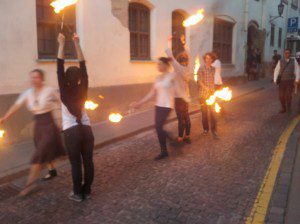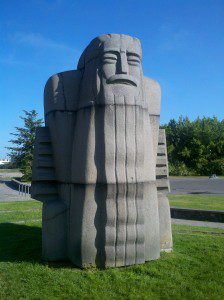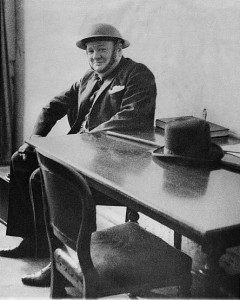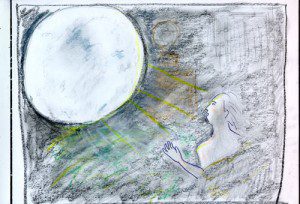
Marija Gimbutas declared with urgent clarity in The Civilization of the Goddess: “We must refocus our collective memory. The necessity of this has never been greater as we discover that the path of ‘progress’ is extinguishing the very conditions for life on earth.”
The emerging discipline of dream archaeology provides powerful tools for refocusing collective memory, exactly as the great Lithuanian scholar of the Goddess proposed. Dreams guide us to the necessary past, to the history we need to know and use. Dreams may also trigger and direct specific lines of research. Dreaming, we have direct access to the realm of the ancestors. We can choose to reach to the ancestors through dream incubation and by developing the skills of shamanic dreaming.
The practice of dream archaeology involves reclaiming authentic knowledge of ancestral traditions, including those that may have been buried or suppressed in the course of history, through a combination of careful research, active dreamwork and shamanic journeying across time and between dimensions. The dream archaeologist combines the skills of the shaman, the scholar and the detective.
We let dreams set us assignments. Secrets of the past, of which the waking mind may know nothing or very little, come to us in dreams because we are ready for them, and because the ancestors speak to us. As dream archaeologists, we work with such dreams through focused investigation, tracking that strange word, looking again at the fragments of that figurine. We also carry our exploration into the dream space, by learning to go back inside a dream, wide awake and conscious, as an archaeological team may penetrate to previously hidden levels of a site, or the inner caves where the great revelations are to be found. I call this technique dream reentry. It is practiced wide awake and conscious, and may be a joint venture by a whole group of active dreamers. We use shamanic drumming to fuel and focus our expeditions, using a dream image as a doorway to harvest more information, open direct dialogue with the ancestors, and go to the deeper levels of reality where the meaning of things can be found.
We are open to the phenomenon that Yeats, with poetic insight, called the “mingling of minds”. This means that when we give our best efforts and passion to our chosen work or study, we draw the support of intelligences beyond the everyday world, including those of past masters in the same field. After her death, Marija Gimbutas appeared to her friend and biographer Joan Marler in a powerful dream. Marija said fiercely, “You must remember us.” Joan understood that Marija was speaking from the realm of the ancestors, “a place of collective memory and wisdom”.
I have been privileged to lead five workshops in shamanic dreaming and dream archaeology in Lithuania. Joan Marler observed that ‘it was Marija Gimbutas’ great fortune to have come from a culture in which many ancient mythological elements were preserved into the twentieth century.” It has been my great good fortune to find those mythic elements still very much alive in the early twenty-first century, and to be able to help midwife experiential access to them for groups of adventurous Lithuanians through the practice of dream archaeology.
I first traveled to Marija Gimbutas’s native country on a rainy day in June 2004. On the night of the summer solstice, from a steeply tilted rooftop in the old capital of Vilnius, I watched girls dancing in floral wreathes, and saw bonfires blazing all through the town. I had been invited by a Lithuanian friend, a psychologist and journalist, to lead a three-day Shamanic Dreaming retreat “to help us reclaim our authentic traditions”. Forty Lithuanians gathered for the retreat at Nida, the resort village on the Baltic where Thomas Mann built a summer home and wrote some of his novels about Joseph, the great dreamer of the Bible.
I began the Nida workshop by asking the Lithuanians to picture a tree that they loved, and go down through its roots into a world within the tree where they would find a spiritual ally. I invited them to be open to a possible encounter with the Earth Mother in one of her forms. In Lithuania, the name of the Earth Goddess is Žemyna.
While drumming for the group, I made my own journeys into the realm of Žemyna. I saw the Earth Mother as a voluptuous figure whose contours were the living land itself. She opened her body and revealed the form of a priestess dressed in green, with a woven cap with moon pendants and a knife at her waist. The Earth priestess showed me a ritual for raising serpent energy to burn away addiction, unclean spirits and psychic toxins.
I wanted to reenter my vision, and several Lithuanian dreamers volunteered to accompany me in a shared dream journey; we were able to bfring back words of the old language, and symbols from the ancient priestesses, and I learned, indelibly, about the spiritual meaning and uses of amber.

Last week, in my latest visit to Lithuania, I came to know Gabija, the fire goddess, in visions during the journeys with the drum, and saw her honored by fire dancers in the streets of the Old City of Vilnius. In Kaunas, where two rivers join, it was my time to make closer acquaintance with Perkunas, the god of storm and lightning; I felt his moody power as great thunderheads reared suddenly in a blue sky, bringing down drenching rains as we hurried along Laisves Aleja (“Liberty Boulevard”).
We find we have soul connections to certain countries, and I have found that Lithuania is part of the geography of my soul. So this story will have further installments.

